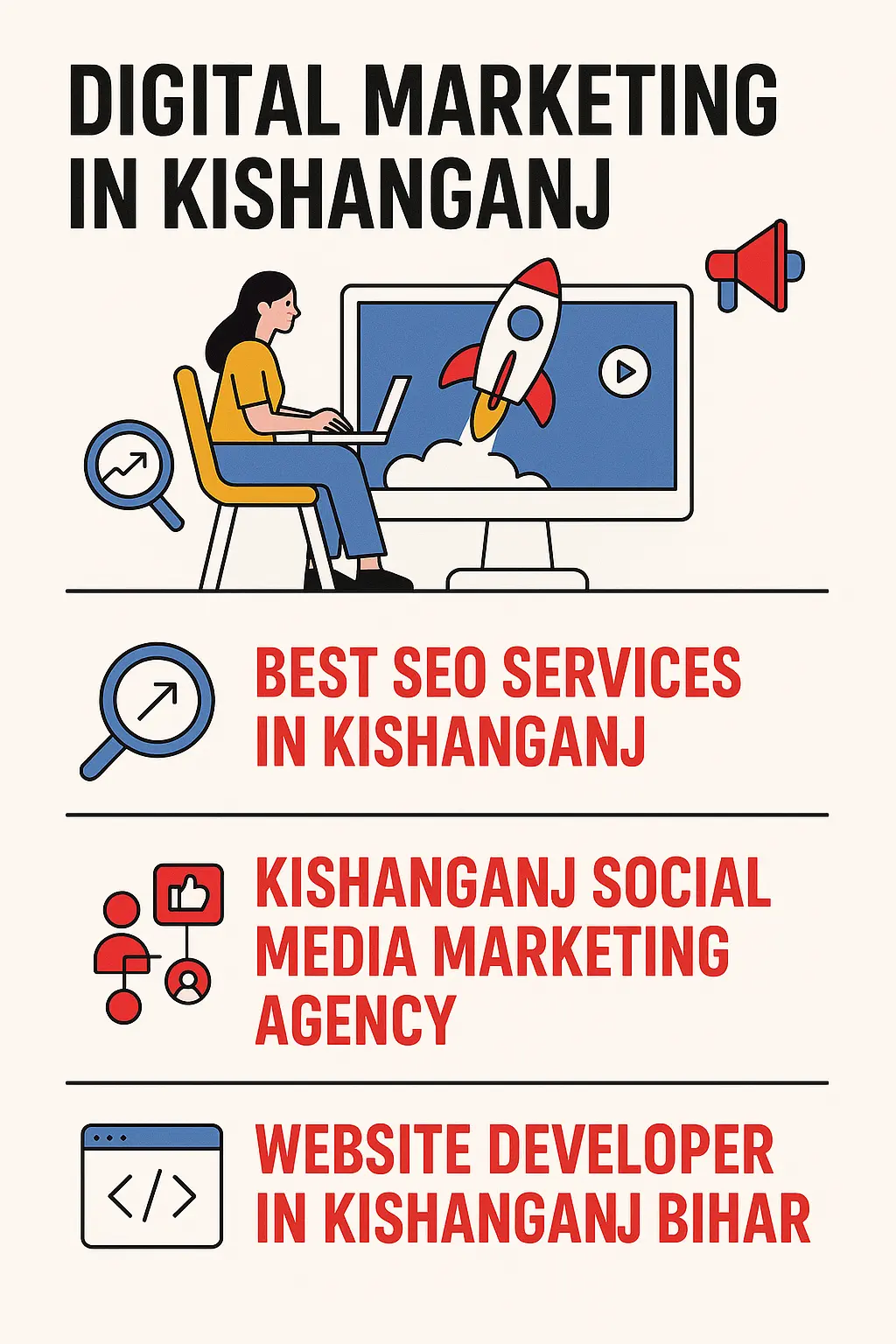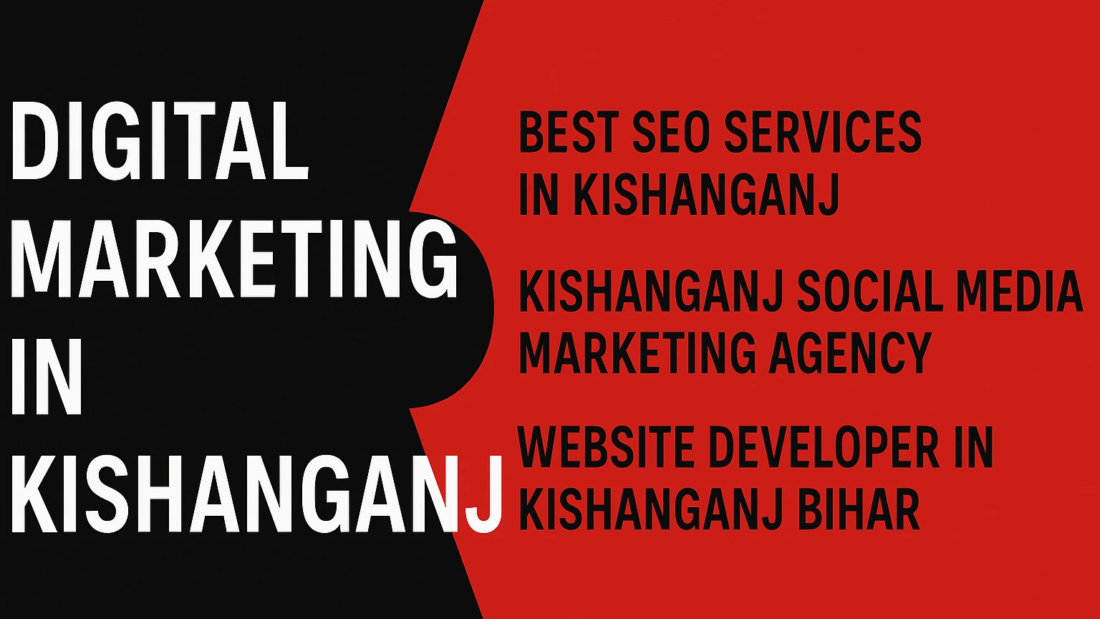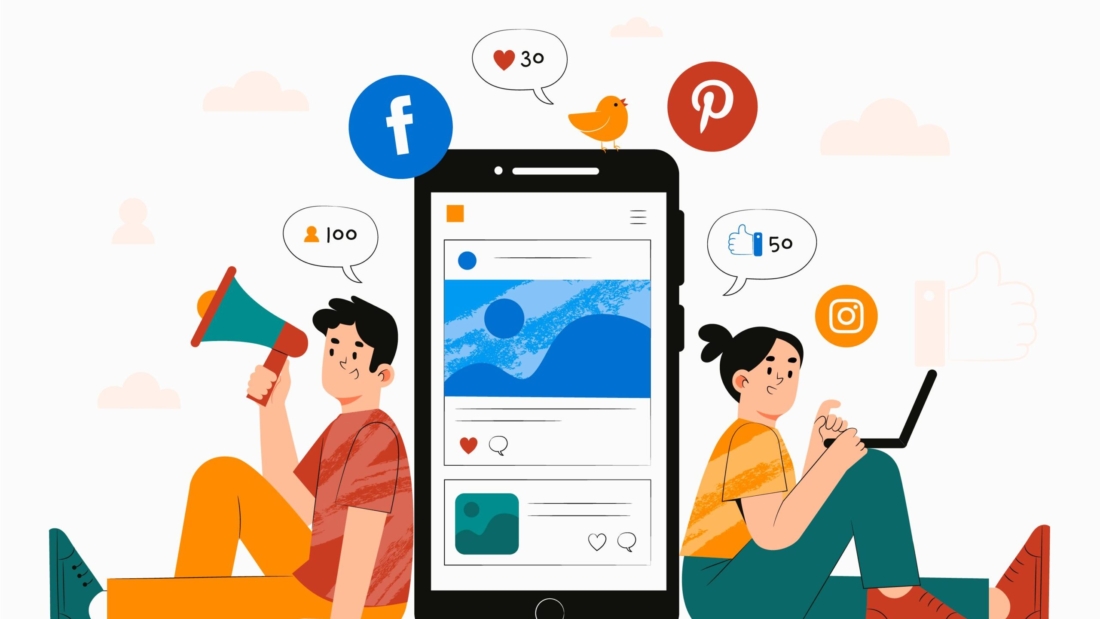Looking for expert digital marketing in Kishanganj? Get top SEO services, social media strategies, and website development tailored to local businesses in Kishanganj, Bihar. Free consultation!
Digital Marketing in Kishanganj: Boost Your Business Online
In today’s hyper-competitive digital landscape, Digital Marketing in Kishanganj is not just an option—it’s a necessity. Whether you’re a small local shop or a growing enterprise in Bihar, leveraging the right online strategies can multiply your visibility, leads, and revenue. This comprehensive guide dives deep into:
- Best SEO Services in Kishanganj
- Kishanganj Social Media Marketing Agency’s offerings
- Website Development in Kishanganj, Bihar
Read on to discover how to choose the right partner, the latest trends, actionable tips, and real-world examples to transform your online presence.
Why Digital Marketing Matters in Kishanganj
Kishanganj, a burgeoning commercial hub in Bihar, is witnessing rapid digital adoption. With rising internet penetration and mobile usage, your potential customers are increasingly looking online to search for products, services, and solutions.
- Local Competition: As more businesses establish an online presence, standing out requires professional digital marketing.
- Cost-Effectiveness: Compared to traditional media, online channels offer precise targeting, measurable return on investment (ROI), and scalability.
- Customer Behavior: 78% of consumers research online before purchasing (source: industry benchmark).
Investing in Digital Marketing in Kishanganj ensures you capture this crescent audience, stay ahead of rivals, and build lasting customer relationships.
Best SEO Services in Kishanganj
Search Engine Optimization (SEO) is the cornerstone of any digital strategy. Here’s how the Best SEO Services in Kishanganj can elevate your rankings:
1. On-Page SEO
- Keyword Research & Mapping: Target local search terms like “SEO Services in Kishanganj,” “Digital Marketing in Kishanganj,” and “Website Developer in Kishanganj, Bihar.”
- Meta Tags Optimization: Craft unique title tags (≤60 characters) and meta descriptions (≤155 characters), including your focus keywords.
- Content Optimization: Use header tags (H1, H2, H3), incorporate keywords naturally, and add internal/external links.
Image SEO: Optimize file names and add descriptive alt text:
<img src=”kishanganj-seo-team.jpg” alt=”Best SEO Services in Kishanganj team at work”>
2. Off-Page SEO
- Local Citations & Directories: Ensure NAP (Name, Address, Phone) consistency across Google My Business, Justdial, Sulekha, etc.
- Backlink Building: Earn high-quality backlinks from local news sites, industry blogs, and educational portals in Bihar.
- Guest Posting: Contribute value-driven articles on regional blogs to establish authority.
3. Technical SEO
- Site Speed Improvements: Compress images, leverage browser caching, and minify CSS/JS.
- Schema Markup: Implement LocalBusiness schema to help search engines understand your location and services.
- XML Sitemaps & Robots.txt: Submit updated sitemaps to Google Search Console and Bing Webmaster Tools.
4. Local SEO for Kishanganj Businesses
- Google My Business (GMB): Complete every section—address, contact, hours, services, photos, posts, and reviews.
- Customer Reviews: Encourage satisfied clients to leave 5-star reviews; respond promptly to feedback.
- Hyper-Local Content: Publish blog posts about events, festivals, and news in Kishanganj to capture ‘near me’ searches.
Kishanganj Social Media Marketing Agency
A dedicated Kishanganj Social Media Marketing Agency can craft and execute strategies on platforms your audience loves:
1. Platform Selection & Strategy
- Facebook & Instagram: For B2C, leveraging Stories, Reels, and Shoppable Posts.
- LinkedIn: Ideal for B2B lead generation and networking with local professionals.
- YouTube & Shorts: Video tutorials, customer testimonials, and local event coverage.
2. Content Creation & Curation
- Content Calendar: Plan posts around local festivals (e.g., Eid, Diwali) and product launches.
- Visuals & Graphics: Use high-quality images showcasing Kishanganj landmarks and behind-the-scenes of your team.
- Copywriting: Craft compelling captions with calls to action like “Learn more,” “Book now,” or “Visit our office in Kishanganj.”
3. Paid Advertising (SMM Ads)
- Facebook Ads: Target demographics within a 20-km radius of Kishanganj city.
- Instagram Story Ads: Short, punchy video ads optimized for mobile viewing.
- LinkedIn Sponsored Content: Reach decision-makers in Bihar’s industries.
4. Community Building & Engagement
- Groups & Forums: Host Q&A sessions in local business groups.
- Live Sessions: Demonstrate products or provide SEO tips live from your Kishanganj office.
- User-Generated Content: Encourage customers to tag your page in their photos for a chance to be featured.
Website Developer in Kishanganj, Bihar
A robust website is the foundation. Hiring the right Website Developer in Kishanganj, Bihar, ensures your site is fast, secure, and user-friendly.
1. Responsive & Mobile-First Design
- Over 65% of local searches come from mobile devices. Your developer must build a site that adapts seamlessly to all screen sizes.
2. UX/UI Best Practices
- Intuitive Navigation: Clear menus, breadcrumb trails, and clickable phone/email links.
- Visual Hierarchy: Use contrasting buttons for “Request a Quote,” “Contact Us,” or “Book Online.”
3. CMS & E-Commerce Solutions
- WordPress & WooCommerce: For easy content updates and online stores.
- Shopify / Magento: If you need advanced e-commerce features with local payment gateways (Paytm, UPI, NetBanking).
4. Speed Optimization
- Aim for a PageSpeed Insight score above 90. Implement lazy loading for images and async loading for scripts.
Integrating All Channels for Maximum Impact
The true magic lies in synergy:
- SEO + Content Marketing: Use blog posts targeting “Best SEO Services in Kishanganj” to attract organic traffic.
- Social Media Amplification: Share these posts on Facebook and LinkedIn to drive referral traffic and engagement.
- Paid Ads Retargeting: Create custom audiences of website visitors for remarketing campaigns on Google and social platforms.
- Email & SMS Follow-Ups: Capture leads via on-site forms and nurture them with personalized offers.
Measuring Success: KPIs & Analytics
Track these metrics to ensure ROI:
- Organic Traffic: Monitor growth in sessions from search engines.
- Keyword Rankings: Check positions for target phrases like “Digital Marketing in India.”
- Conversion Rate: Percentage of visitors who fill out a form, call, or purchase.
- Engagement Rate: Click-through rates (CTR) on ads, post likes, shares, and comments.
- Bounce Rate & Time on Page: Indicates content relevance and user experience.
Tools to use:
- Google Analytics 4
- Google Search Console
- Hotjar or Crazy Egg for heatmaps
- Social platform insights (Facebook Insights, Instagram Analytics)
How to Choose the Right Agency in Kishanganj
- Portfolio & Case Studies: Look for proven results with local clients.
- Certifications: Google Partners, Facebook Blueprint, and recognized web development badges.
- Transparent Reporting: Insist on monthly reports with clear KPIs.
- Local Presence & Support: On-site visits, phone accessibility, and prompt support.
- Customized Packages: Avoid one-size-fits-all—your business needs a tailored strategy.
Frequently Asked Questions (FAQs)
Q1: How long before I see results from SEO?
A1: On average, local SEO shows noticeable improvements in 3–6 months, depending on competition and initial website health.
Q2: What is the cost of social media marketing in Kishanganj?
A2: Packages vary, but expect a range of ₹15,000–₹50,000 per month, inclusive of content creation, ad spend, and management fees.
Q3: Do I need a brand-new website if mine is outdated?
A3: Not always. A redesign and optimization can suffice unless your CMS is obsolete or unsupported.
Q4: Can you handle both Hindi and English content?
A4: Yes, bilingual marketing (Hindi + English) helps you reach a wider audience in Bihar.

Final Thoughts
Investing in Digital Marketing in Kishanganj, backed by the Best SEO Services in Kishanganj, a dedicated Kishanganj Social Media Marketing Agency, and an expert Website Developer in Kishanganj, Bihar, is the key to unlocking sustained growth.
Ready to transform your online presence?
- Book a free consultation with our local experts.
- Request a proposal tailored to your business goals.
- Get a website audit and SEO analysis—free!
Don’t let competitors capture your market share. Take the first step toward digital success in Kishanganj today!








